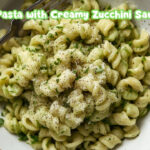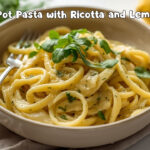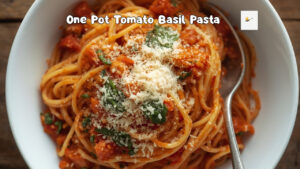Table of Contents
ToggleGrana Padano is an Italian hard cheese made from unpasteurized cow’s semi-skimmed milk. It originated in the Po Valley, northern Italy. It has a crumbly-firm texture, with a pale yellow color and rich-nutty in flavor.
The Italian word “grana” means the cheese has a grainy or rough texture. “Padano” comes from Val Padana, which means the cheese is from the Po Valley area in northern Italy.
The current format of this cheese is very similar to Parmigiano Reggiano, but Grana Padano is generally a much milder cheese than Parmigiano Reggiano.
It is a great cheese for finishing pasta dishes, especially ones with lighter, more delicately flavored sauces or dressings. If you wanted to make a cacio e pepe, less intense or slightly less salty, Grana Padano would be a good choice to mix with Pecorino Romano.
Please read this article to learn what Grana Padano is, what it tastes like, how to use it in cooking, and how it’s different from other cheeses like Parmigiano Reggiano.
What does Grana refer to?
The word Grana comes from the Italian language, which means “grain.” This name refers to a group of Italian hard cheeses known for their grainy, crumbly texture. These cheeses are usually aged apart from other types of cheese. When you cut or break a piece of this cheese, you can see tiny, visible grains or crystals, which are often the result of aging and add a unique crunch and flavor to the cheese.
Grana is a generic term used to define three main types of cheeses, – Parmigianino Reggiano, Grana Padano, and Grana Trentino, and also some lesser-known ones like Granone Lodigiano, Trentingrana, and Gransardo. This group of cheeses is most often used for grating over pasta, soups, or salads.
Parmigiano Reggiano and Grana Padano are the most famous types of Grana cheeses from Italy, with about 24% of the country’s milk production. Parmigiano Reggiano is occasionally called the “King of Cheeses.” Cows that produce milk only graze on lush green grass, and for Grana cheeses, they must be milked twice a day. The milk is taken to the cheese factory within two hours after milking, and its temperature must stay above 18°C. It is important because the good bacteria needed to age the cheese properly need warmth to grow.
Parmigiano Reggiano gets this name from the places where it’s made—like Parma, Reggio Emilia, Modena, Bologna, and Mantua. This cheese has a rough, grainy texture and is typically hard. As it ages, its flavor gets stronger and becomes richer, with a fruity and nutty taste.
Although “Grana” is often used as a general word for these cheeses, it is similar to Parmigiano Reggiano. When Grana Padano is younger, it is a bit softer in texture, has a milder taste, and is less strong in flavor.
Grana Padano is named after the Po Valley (Pianura Padana), the area where it originated and in the European Union, the Grana’s name is legally protected. Only Grana Padano can officially use the word “Grana” when being sold in EU countries, thanks to a special protection rule.
Moreover, Grana Trentino’s making process is similar to Parmigiano Reggiano, but it comes from the Trento region, which is how it got its name.
Today, all three main Grana cheeses have a Protected Designation of Origin (PDO) status. This means their quality and ingredients can only be made in specific parts of northern Italy and must be produced using traditional methods.
How Is Grana Padano Made?
Grana Padano was first produced by Cistercian monks at the Chiaravalle Abbey, in the 12th century near Milan. They invented the cheese as a way to preserve surplus milk by turning it into a hard cheese that they could age and store.
Grana Padano is made from cow’s raw, partially skimmed milk, though these cows are also milked twice a day, the milk doesn’t need to reach the cheese factory until up to 24 hours after milking. But modern tools are used today, and the process and recipe have changed a bit. Here’s a simple breakdown of the process:
- First, fresh skimmed milk is poured into traditional copper pots; it is heated and mixed with whey and rennet (an enzyme) to form curds.
- Next, when the curds have settled, it is broken into small pieces using a big whisk called a spino. After that, they are heated and then molded into round cheese wheels using a special mold called a fascia.
- Next, the cheese wheels are placed in salty water in which they soak for at least two weeks, called brine.
- After soaking, the cheese wheels are dried and then begin the important process of aging to develop their flavor.
- Finally, the experts check regularly and monitor for quality of cheese wheels to make sure they have the right texture, taste, and smell. This versatile mature cheese has attains granular texture that becomes firmer and crumblier as it ages. Now, golden Grana Padano wheels are ready to be shared with the world.
As a result, Grana Padano cheese is tasty and flexible, great for grating over pasta or eating by itself. Some types are aged even for up to 24 months or longer. As it ages, the cheese becomes harder and crumblier, and the flavor gets stronger with savory, nutty, and slightly sweet notes.
Grana Padano has a pale yellow or straw-like color inside with a natural outer rind. It is sold at different ripening stages:
– Grana Padano (aged 9 to 16 months)
– Grana Padano oltre 16 mesi (aged over 16 months)
– Grana Padano Riserva (aged over 20 months)

It is important to note that all main types of Grana cheese have the DOP label (Denomination of Protected Origin), which means they are made in the right region using traditional methods and meet high-quality standards.
What is the origin of Grana Padano?
Grana Padano was first made in Northern Italy in the 12th century. It was first created by Cistercian monks near Milan at a place called Chiaravalle Abbey. Today, it’s also made in other regions that include areas like Lombardy, Emilia-Romagna, Piedmont, Trentino-Alto Adige, and Veneto.
Still, it’s made by following strict rules to keep the traditional methods alive, which is why it’s known for being such a high-quality and well-loved cheese.
Is Grana Padano Pasteurized Cheese?
No, Grana Padano is made from raw (unpasteurized) milk. This means the milk used in cheese making hasn’t been heated to get rid of bad germs. However, it is safe to eat because it’s aged for a long time, which helps kill harmful bacteria.
What Does Grana Padano Cheese Taste Like?
Grana Padano has a mild, nutty, and slightly sweet flavor. As it ages, it becomes firmer and more delicious.
- Younger cheese (9–16 months): Creamy and delicate
- Aged cheese (16–24 months): Rich, savory, and slightly crumbly
It’s similar to Parmigiano Reggiano but a bit milder and smoother in texture.
What pairs well with Grana Padano?
Grana Padano is enjoyed on its own as a starter or on a cheeseboard. It tastes great with sweet things like dates and figs and with some honey. It’s also pairs beautifully with a variety of foods and with different types of wine, depending on how long it’s been aged for:
1. Aged9–16 months (young, nutty)
- Light white wines: Prosecco, Chardonnay
- Rosé wines: Pale, fruity rosés
2. Aged over 16 months (richer, buttery)
- Soft red wines: Chianti, Pinot Noir, Bardolino
3. Aged 20+ months (Riserva – bold & mature)
- Full-bodied reds: Amarone della Valpolicella, Nero d’Avola
- Even strong dessert wines can pair well with a sweet twist (like honey + cheese)
How to Use Grana Padano Cheese
You can enjoy it by itself, grate it over pasta or risotto, and even taste great when it is shaved onto salads.
1. Grating

Grating is one of the most popular ways to use this cheese. Its hard, crumbly texture makes it perfect for grating into fine shreds or chunky pieces, which add a rich, nutty flavor to your dish. You can grate it over:
- Pasta
- Risotto
- Soups
- Salads
- Roasted veggies
2. Snacking

Grana Padano has its perks when enjoyed as a snack, or you can enjoy it on a cheese board. Cut it into small cubes, wedges or slices; it tastes great with pairs well with:
- Grapes or figs
- Olives
- Bread or crackers
- Cured meats like prosciutto
3. Cooking

Grana Padano is used in different kinds of cooked dishes, or you can even melt it into different pasta dishes.
- Grating or shaving it into soups, stews, and risotto to add richness to dishes.
- Mix it into fillings for lasagna, stuffed pasta
- Sprinkle it on top of baked dishes like eggplant parmigiana
It also melts well and tastes great in sauces or as a topping for pizza and bruschetta. Its bold flavor is enough to add richness to any dish.
Risotto alla Milanese is one classic Italian dish where Grana Padano really shines. A creamy saffron-stuffed risotto is finished with plenty of grated cheese, which enhances the dish’s creaminess and gives umami flavor.
You can even get creative and use it in sweet dishes. I love to grate a little over a slice of honey-drizzled pear or apple for a surprising and delicious mix of sweet and salty.
4. Using the Rind

Never throw away the rind! While it’s hard to eat raw, but outer rind is full of flavor and can be a secret ingredient in your cooking. The hard outer rind can be added to soups or stews while cooking for an extra savory punch. You can also bake or microwave for a crunchy snack.
Is this suitable for vegetarians?
Grana Padano isn’t vegetarian friendly because it’s made using animal rennet, an enzyme traditionally sourced from the stomach lining of cows, which vegetarians typically avoid (due to its special PDO status).
But there’s some good news, too. If you’re looking for a vegetarian option, try:
- Grana Padano is mostly made from milk, so it is naturally lactose-free because of the way it’s made and aged.
- Some versions of Parmigiano-style cheeses are made specifically for vegetarians.
Grana Padano vs. Parmigiano Reggiano: What’s the Difference?
| Feature | Grana Padano | Parmigiano Reggiano |
| Milk Type | Raw cow’s milk | Raw cow’s milk |
| Aging Time | 9–24+ months | 12–36+ months |
| Flavor | Milder, creamier | Stronger, sharper |
| Additives | May contain lysozyme | No additives allowed |
| Price | More affordable | More expensive |
| Uses | Great for daily use | Ideal for gourmet dishes |
How to Pronounce Grana Padano?
Say it like this: GRAH-nah pah-DAH-no
Don’t worry if it may sound fancy, but it gets easy after practicing a few times, and you’ll feel more confident saying and ordering this tasty cheese in no time.
Where to Buy it?
Grana Padano is easily available at most grocery stores, Italian markets, or online. Always examine the DOP stamp to make sure it’s original.
Substitutes FOR Grana Padano
You can also find several good alternatives to Grana Padano at most grocery stores or cheese shops. Some similar substitutes are:
- Pecorino Roman
- Parmesan
- Gouda
- Aged Gouda
- Asiago DOP
How to Store Grana Padano?
It can be stored and used after months with the same great taste. Here are some suggestions to follow to keep it fresh:
- Wrap it in wax paper or plastic wrap.
- Store in the fridge.
- Use within a few weeks for the fresh flavor.
Summary
Grana Padano is a delicious and easy-to-use cheese that elevates richness to your meals. Whether you grate it on pasta, enjoy it as a snack, or cook it in your favorite dishes, this Italian cheese is sure to impress on its own. Its nutty flavor and crumbly texture make this cheese a super flexible, perfect ingredient that adds depth to all kinds of dishes. So go ahead—explore it and enjoy this delicious Italian classic!
Frequently Asked Questions
What is Grana Padano used for?
Grana Padano is a super versatile ingredient with a rich, nutty taste that goes well with both sweet and salty foods. You can use it in many dishes, like grate it over pasta or risotto, and it even tastes great when it is shaved onto salads.
Is Grana Padano the same as Parmesan?
In cooking, these cheeses are often interchangeable and are the same in flavors. But Parmesan’s texture is more crumbly and more premium, aged cheese.
Is Grana Padano Cheese Gluten-Free?
Yes, Grana Padano is naturally gluten-free. However, individuals should always double-check the label. Cross-contamination may happen during processing in pre-grated or packaged cheese.
Does Grana Padano Cheese Melt?
Yes, Grana Padano cheese does melt and soften only when heated. But it does not melt in the same way as softer cheeses such as mozzarella or cheddar.
How Long Can Grana Padano Cheese Sit Out?
Grana Padano cheese can safely sit out at room temperature for about 2 to 4 hours. To maintain the freshness and quality of Grana Padano, never keep any perishable food sitting out of the fridge for more than two hours.













